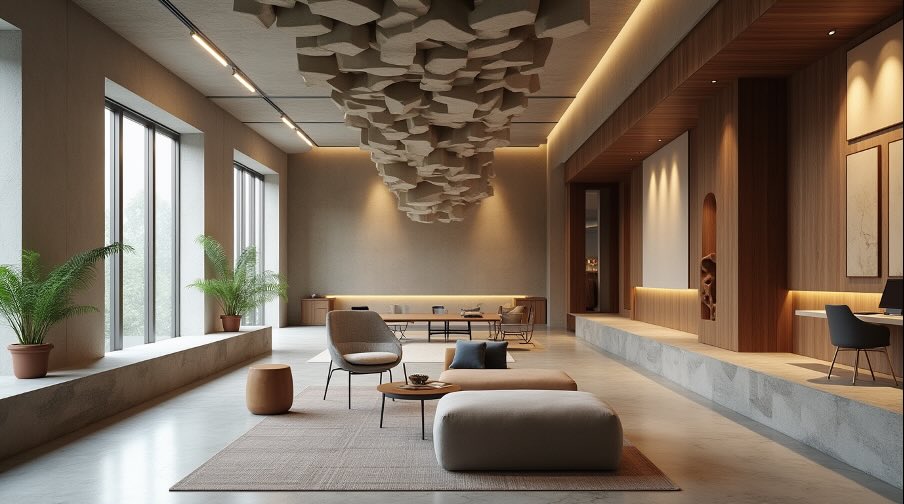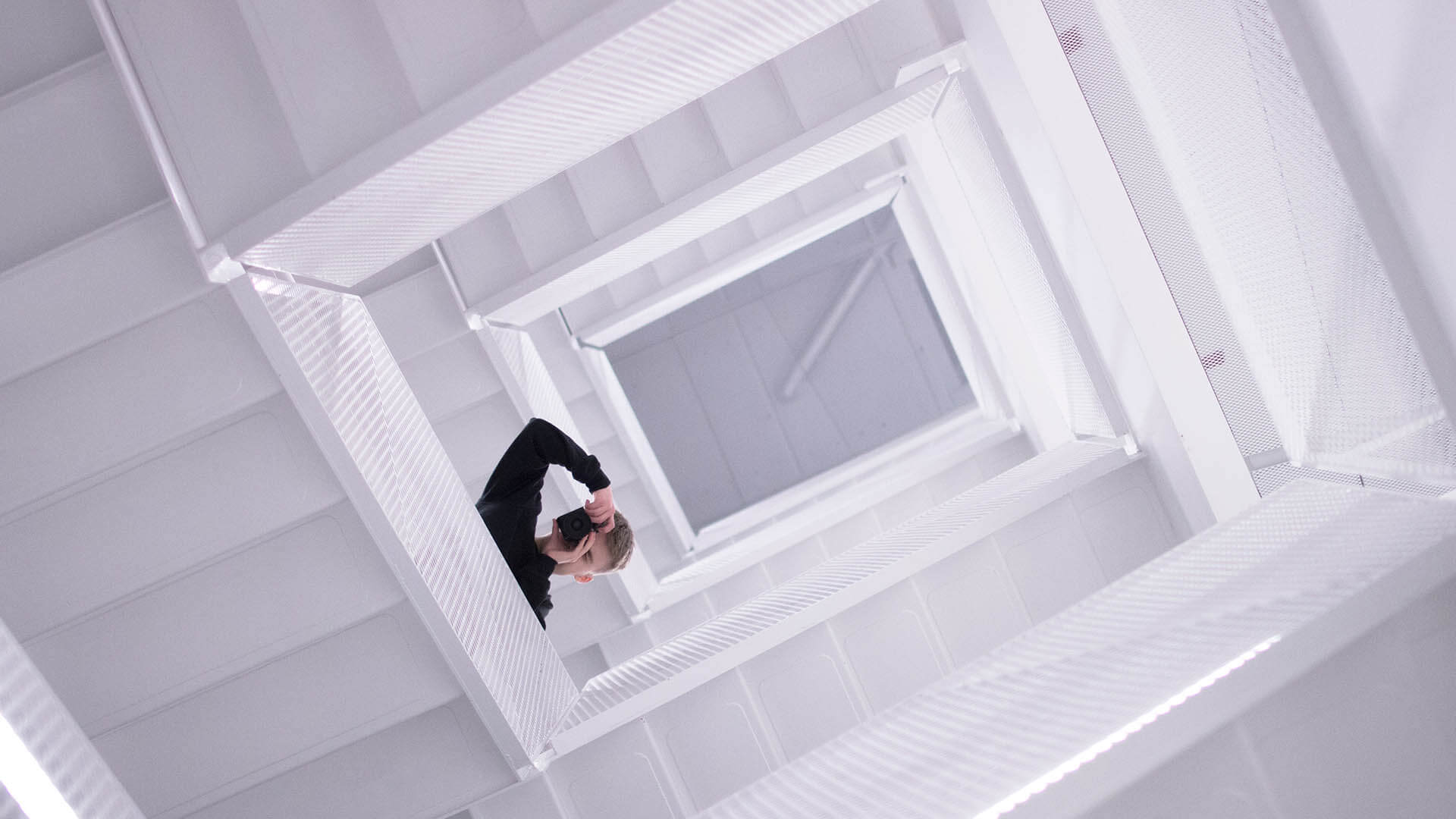In modern architecture, sound is no longer an afterthought. Today's designers are challenged to create spaces that are not only beautiful but also acoustically optimized. Whether it's a high-end office, a concert hall, or a private home, the demand for acoustic comfort is rising—and so is the expectation that it will be visually integrated into the design.
Gone are the days when acoustic solutions meant bulky, unattractive panels hidden behind walls or ceilings. The architectural community has witnessed a dramatic shift in acoustic treatment approaches, with framed acoustic panels now becoming statement pieces in sophisticated interiors, blending technical performance with aesthetic excellence in ways previously unimaginable.
The Evolution of Acoustic Architecture
From Ancient Amphitheaters to Modern Multipurpose Spaces
The story of acoustic design stretches back thousands of years. Ancient civilizations intuitively understood the importance of sound in shared spaces. Greek amphitheaters, built with precise geometry and materials, projected unamplified voices to audiences of thousands. Roman baths and Byzantine churches also show early examples of intentional acoustic engineering.
Fast forward to the 20th century, and we see a turning point. The rise of sound recording, broadcasting, and large-scale performances demanded new levels of acoustic control. Concert halls, lecture theaters, and civic spaces began to incorporate scientifically developed acoustic treatments into their design.
This legacy continues in multipurpose venues, co-working hubs, and homes, each requiring flexibility, comfort, and sound clarity.
Sound as a Design Element
In the past, sound was managed separately from design. Now, it's treated as an architectural ingredient, like light, texture, or form. Architects and designers are embracing sound shaping as part of the spatial experience. Acoustic strategy has become central to spatial planning, whether it's to create intimacy in a restaurant, clarity in a meeting room, or calm in a living space.
This shift means that sound is not only measured and controlled—it's expressed. Surfaces, volumes, and materials are selected for how they sound, not just how they look or feel. It's no longer just about blocking noise but about crafting a space's sound with the same care as its lighting or layout.
Acoustic Solutions as Design Statements
As expectations rise, so does creativity. Acoustic elements evolve beyond their technical role to become part of a space's visual identity.
The Rise of Decorative Sound Absorption
Modern interiors are embracing bold, visible acoustic solutions. Designers are choosing colorful wall panels, textured ceiling clouds, and sculptural baffles for their function and form. These elements soften sound while adding rhythm, contrast, and interest to a room.
From minimalist to eclectic interiors, decorative sound absorbers now fit seamlessly into any style. They can echo the geometry of the space, reinforce branding in commercial environments, or act as a striking focal point.
Material Innovations Driving Aesthetic Possibilities
New materials are making this design leap possible. From PET felt made of recycled plastic bottles to sculpted wood composites and natural wool fibers, today's acoustic products come in various sustainable, tactile finishes.
These materials don't just look good—they behave differently. Some absorb bass frequencies better, others target mid- or high-range reflections. Their versatility allows for custom solutions that enhance performance and appearance, opening new doors for architects and designers who want more than a compromise.
Contemporary Acoustic Products Transforming Spaces
Modern acoustic products do more than solve problems—they elevate the spaces they inhabit. From residential lofts to corporate headquarters, designers now have a toolkit that combines precision sound control with aesthetic refinement.
Framed Acoustic Panels and Their Applications
Among the most versatile solutions are framed acoustic panels. These panels come in various shapes, sizes, and finishes—wood, fabric, metal—allowing them to blend with or enhance the surrounding design. They can be mounted as individual pieces, arranged in grids, or displayed as wall art. They improve clarity in conference rooms, creative studios, and home theaters while doubling as design elements.
Advances in manufacturing now allow for high-resolution prints, custom colors, and material combinations that give architects total control over form and function. Whether flush-mounted or floating, these panels act as visual anchors and acoustic shields.
Sculptural Acoustic Elements
Three-dimensional acoustic pieces are gaining popularity in both commercial and cultural spaces. Unlike traditional flat panels, sculptural elements introduce volume, movement, and shadow into a space. Suspended ceiling baffles, folded wall tiles, and freestanding acoustic totems bring a sense of scale and artistry.
They're used in open-plan offices to create zones, in auditoriums to control reverberation, and in hospitality settings to soften ambient noise without losing the space's vibrancy. These elements often serve dual roles—as sound diffusers and spatial markers—giving designers more flexibility in shaping the room.
Integrated Acoustic Systems
Beyond panels and freestanding elements, integrated acoustic systems are becoming essential in large-scale architecture. These systems are built directly into ceilings, walls, or even furniture, offering seamless performance without adding visual clutter.
Think perforated wood ceilings with acoustic backing, upholstered wall segments with embedded insulation, or acoustic seating modules in collaborative zones. These solutions allow for consistent acoustic treatment across an entire space, while preserving clean lines and open volumes.
Sustainable Approaches to Acoustic Architecture
As design becomes more conscious of its environmental impact, acoustics is following suit. The push for sustainable building materials now extends to sound solutions as well.
Eco-Friendly Acoustic Materials
Recycled PET felt, natural fibers like hemp or sheep's wool, and biodegradable foams are all used to produce high-performance acoustic products with low environmental impact. These materials offer excellent sound absorption and come in various textures and tones that suit modern interiors.
Designers also choose materials with low VOC emissions and responsibly sourced finishes to meet LEED and WELL standards, ensuring that acoustic comfort doesn't come at the expense of air quality or sustainability.
Lifecycle Considerations for Acoustic Products
More architects and clients are asking, "What will happen to this product in 10 years?" The industry is responding with solutions that are not only durable but also recyclable or reusable. Modular panels, reversible mounts, and products made from mono-materials support a circular approach to interior design.
Considering the full lifecycle of an acoustic product—from sourcing to disposal—is becoming a core part of responsible architectural planning. It's no longer enough for a product to sound and look good—it has to be good, too.
In today's design world, sound is inseparable from style. Acoustic architecture is no longer about hiding technical elements behind drywall—it's about showcasing them. With framed panels, sculptural forms, and integrated systems, designers now shape what we see and hear. The result is spaces that feel as good as they look—balanced, intentional, and built for the way we truly live.





